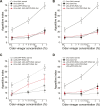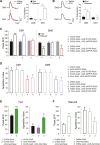Starvation promotes concerted modulation of appetitive olfactory behavior via parallel neuromodulatory circuits
- PMID: 26208339
- PMCID: PMC4531282
- DOI: 10.7554/eLife.08298
Starvation promotes concerted modulation of appetitive olfactory behavior via parallel neuromodulatory circuits
Abstract
The internal state of an organism influences its perception of attractive or aversive stimuli and thus promotes adaptive behaviors that increase its likelihood of survival. The mechanisms underlying these perceptual shifts are critical to our understanding of how neural circuits support animal cognition and behavior. Starved flies exhibit enhanced sensitivity to attractive odors and reduced sensitivity to aversive odors. Here, we show that a functional remodeling of the olfactory map is mediated by two parallel neuromodulatory systems that act in opposing directions on olfactory attraction and aversion at the level of the first synapse. Short neuropeptide F sensitizes an antennal lobe glomerulus wired for attraction, while tachykinin (DTK) suppresses activity of a glomerulus wired for aversion. Thus we show parallel neuromodulatory systems functionally reconfigure early olfactory processing to optimize detection of nutrients at the risk of ignoring potentially toxic food resources.
Keywords: D. melanogaster; RNA-seq; insulin; neuroscience; olfaction; sNPF; substance P; two-photon imaging.
Conflict of interest statement
The authors declare that no competing interests exist.
Figures








Comment in
-
Catching more flies with vinegar.Elife. 2015 Sep 9;4:e10535. doi: 10.7554/eLife.10535. Elife. 2015. PMID: 26350701 Free PMC article.
References
-
- Anders S. HTSeq: Analysing high-throughput sequencing data with Python. 2010 http://www-huber.embl.de/users/anders/HTSeq - PMC - PubMed
Publication types
MeSH terms
Substances
Grants and funding
LinkOut - more resources
Full Text Sources
Molecular Biology Databases

